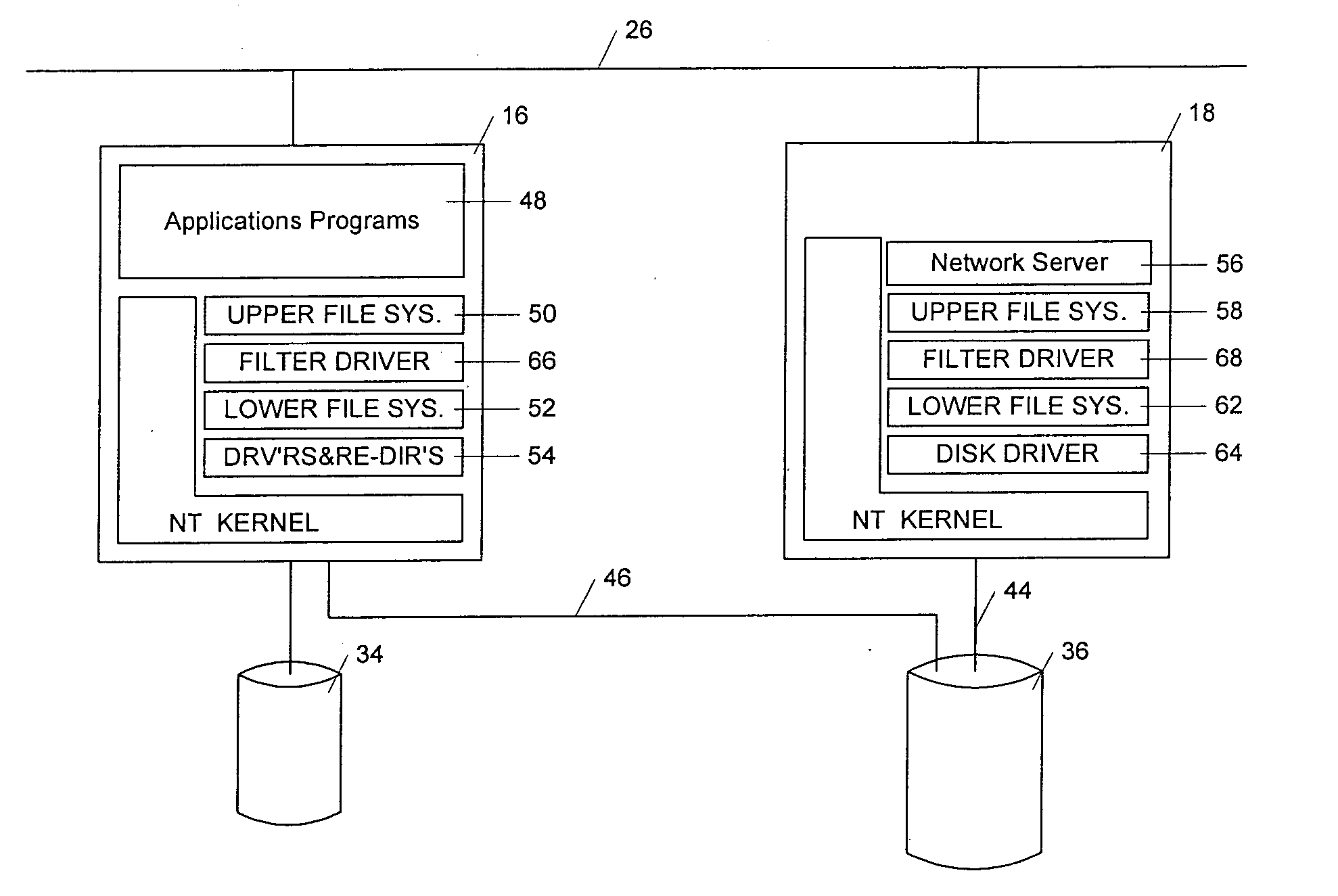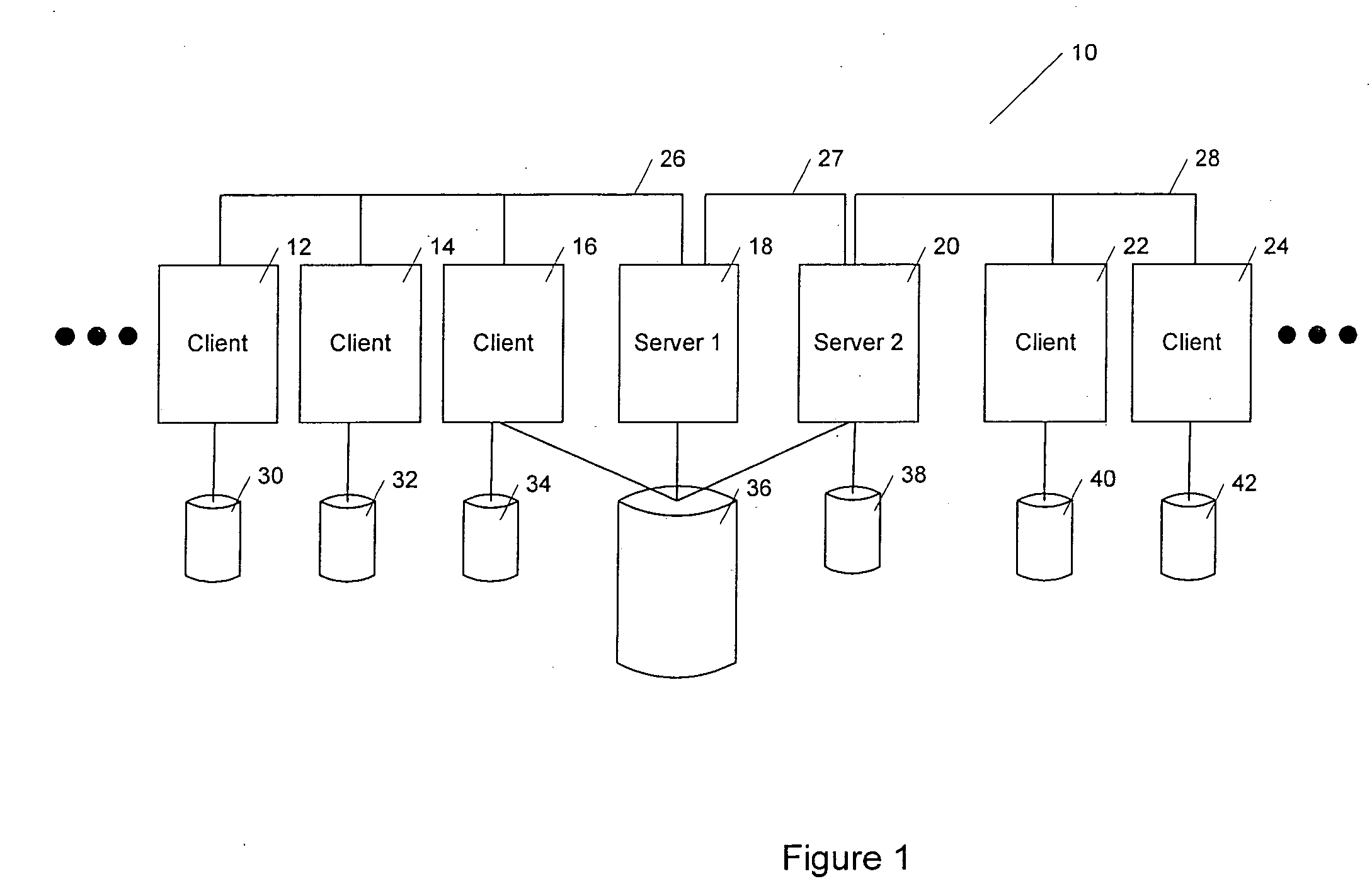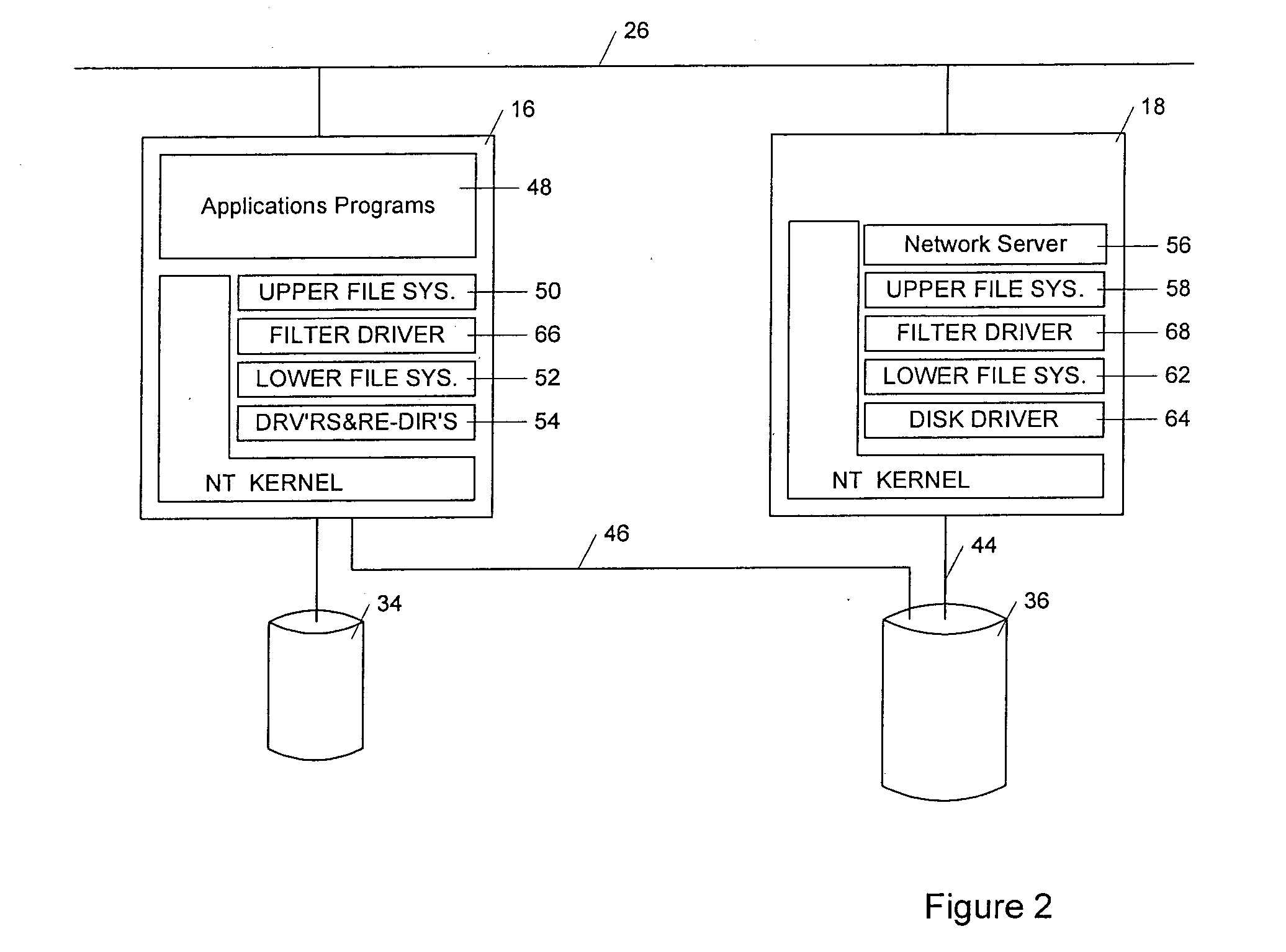Low overhead methods and apparatus shared access storage devices
a storage device and low overhead technology, applied in the field of digital data processing, can solve the problems of not fully keeping pace with the computer, 1.2 gbytes in length, and over an hour to transfer a sixty-second video file, etc., to achieve the effect of easy adaptation, low cost and easy integration
- Summary
- Abstract
- Description
- Claims
- Application Information
AI Technical Summary
Benefits of technology
Problems solved by technology
Method used
Image
Examples
Embodiment Construction
[0032]FIG. 1 depicts a scaleable networked digital data processing system of the type used to practice the invention. The system 10 includes a plurality of nodes 12-24, including two server nodes 18, 20 coupled via network pathways 26, 28 to client nodes 12-16 and 22-24, as shown. Server nodes 18, 20 are additionally coupled to one another via network pathway 27.
[0033] In the illustrated embodiment, nodes 12-24 represent digital data processing apparatus or other devices capable of being coupled to one another in a network and, more particularly, by way of example, in a client-server configuration. Illustrated server nodes 18, 20 represent mainframe computers, workstations, personal computers, or other digital data processing apparatus capable of providing server functions in such networks and, particularly, of controlling access to shared peripheral devices, such as storage device 36. Nodes 12-16 and 22-24 likewise represent workstations, personal computers, dedicated devices, or ...
PUM
 Login to View More
Login to View More Abstract
Description
Claims
Application Information
 Login to View More
Login to View More - R&D
- Intellectual Property
- Life Sciences
- Materials
- Tech Scout
- Unparalleled Data Quality
- Higher Quality Content
- 60% Fewer Hallucinations
Browse by: Latest US Patents, China's latest patents, Technical Efficacy Thesaurus, Application Domain, Technology Topic, Popular Technical Reports.
© 2025 PatSnap. All rights reserved.Legal|Privacy policy|Modern Slavery Act Transparency Statement|Sitemap|About US| Contact US: help@patsnap.com



